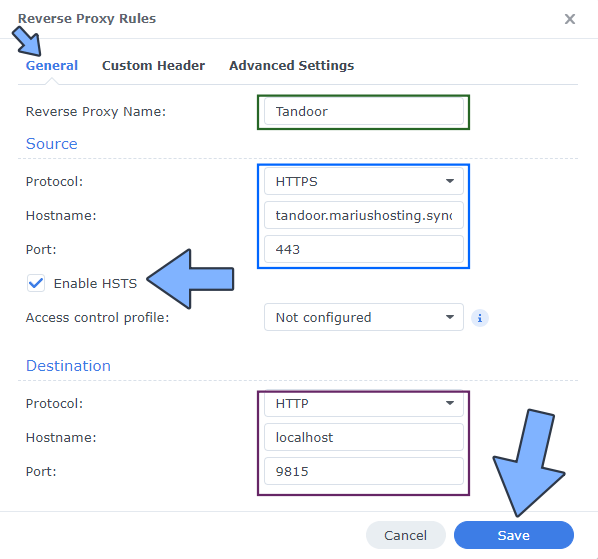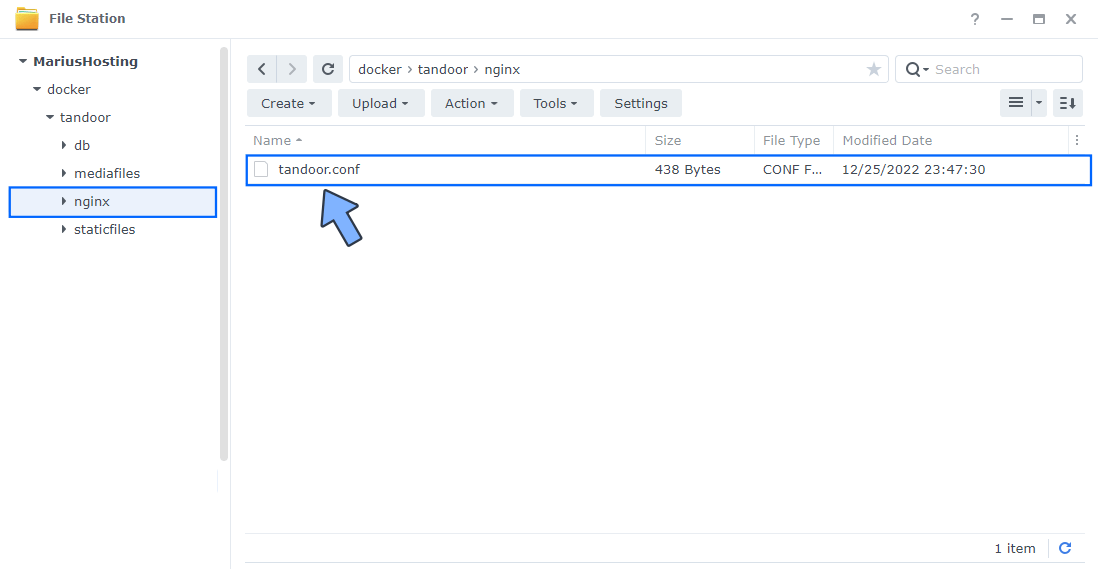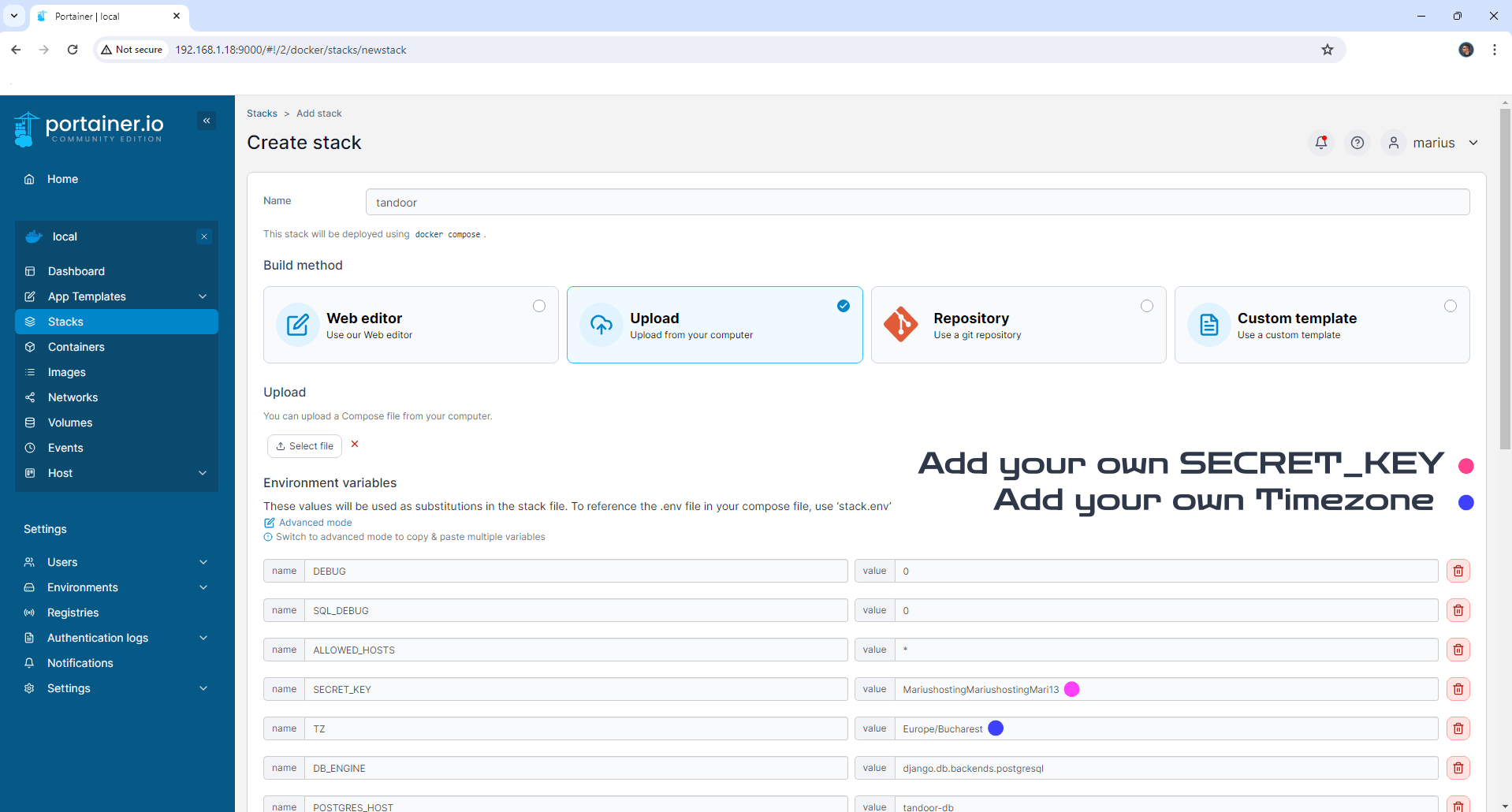
With Tandoor Recipes you can easily manage your recipes with a fast and intuitive editor. Shop lists via the meal plan or straight from recipes with a powerful & customizable search. Tandoor is build around the values of Open Source software and using modern technologies. No tracking, no analytics, just your recipes. Tandoor Recipes is an alternative to Mealie. In this step by step guide I will show you how to install Tandoor Recipes on your Synology NAS using Docker & Portainer.
This guide works perfectly with the latest Tandoor Recipes v1.5.35 release.
STEP 1
Please Support My work by Making a Donation.
STEP 2
Install Portainer using my step by step guide. If you already have Portainer installed on your Synology NAS, skip this STEP. Attention: Make sure you have installed the latest Portainer version.
STEP 3
Make sure you have a synology.me Wildcard Certificate. Follow my guide to get a Wildcard Certificate. If you already have a synology.me Wildcard certificate, skip this STEP.
STEP 4
Go to Control Panel / Login Portal / Advanced Tab / click Reverse Proxy. Follow the instructions in the image below.

STEP 5
Now click the “Create” button. Follow the instructions in the image below.

STEP 6
After you click the Create button, the window below will open. Follow the instructions in the image below.
On the General area, set the Reverse Proxy Name description: type in Tandoor. After that, add the following instructions:
Source:
Protocol: HTTPS
Hostname: tandoor.yourname.synology.me
Port: 443
Check Enable HSTS
Destination:
Protocol: HTTP
Hostname: localhost
Port: 9815

STEP 7
On the Reverse Proxy Rules click the Custom Header tab. Click Create and then, from the drop-down menu, click WebSocket. After you click on WebSocket, two Header Names and two Values will be automatically added. Click Save. Follow the instructions in the image below.

STEP 8
Go to Control Panel / Network / Connectivity tab/ Check Enable HTTP/2 then click Apply. Follow the instructions in the image below.

STEP 9
Go to Control Panel / Security / Advanced tab/ Check Enable HTTP Compression then click Apply. Follow the instructions in the image below.

STEP 10
Go to File Station and open the docker folder. Inside the docker folder, create one new folder and name it tandoor. Follow the instructions in the image below.
Note: Be careful to enter only lowercase, not uppercase letters.

STEP 11
Now create four new folders inside the tandoor folder that you created at STEP 10 and name them db, mediafiles, nginx, staticfiles. Follow the instructions in the image below.
Note: Be careful to enter only lowercase, not uppercase letters.

STEP 12
Download (click on the blue link below) then upload the tandoor.conf file below in the nginx folder that you have previously created at STEP 11. Follow the instructions in the image below. 🔒Note: Support my work to unlock the password. You can use this password to download any file on mariushosting forever!

STEP 13
Log into Portainer using your username and password. On the left sidebar in Portainer, click on Stacks then + Add stack. Follow the instructions in the image below.

STEP 14
In the Name field type in tandoor. Follow the instructions in the image below.
services:
db:
image: postgres:17
container_name: Tandoor-DB
hostname: tandoor-db
security_opt:
- no-new-privileges:true
healthcheck:
test: ["CMD", "pg_isready", "-q", "-d", "tandoor", "-U", "tandooruser"]
timeout: 45s
interval: 10s
retries: 10
volumes:
- /volume1/docker/tandoor/db:/var/lib/postgresql/data
env_file:
- stack.env
restart: on-failure:5
tandoor:
image: vabene1111/recipes:latest
container_name: Tandoor
hostname: tandoor
security_opt:
- no-new-privileges:true
healthcheck:
test: wget --no-verbose --tries=1 --spider http://localhost:8080 || exit 1
volumes:
- /volume1/docker/tandoor/staticfiles:/opt/recipes/staticfiles:rw
- /volume1/docker/tandoor/mediafiles:/opt/recipes/mediafiles:rw
- /volume1/docker/tandoor/nginx:/opt/recipes/nginx/conf.d:rw
env_file:
- stack.env
restart: on-failure:5
depends_on:
db:
condition: service_started
nginx:
image: nginx:mainline-alpine
container_name: Tandoor-NGINX
hostname: nginx-tandoor
security_opt:
- no-new-privileges:true
healthcheck:
test: wget --no-verbose --tries=1 --spider http://localhost:80 || exit 1
volumes:
- /volume1/docker/tandoor/staticfiles:/static:ro
- /volume1/docker/tandoor/mediafiles:/media:ro
- /volume1/docker/tandoor/nginx:/etc/nginx/conf.d:ro
ports:
- 9815:80
env_file:
- stack.env
restart: on-failure:5
depends_on:
tandoor:
condition: service_healthy

STEP 15
Click the Upload button after Web editor. Download the stack.env file by clicking the blue link below and then upload it from your computer in the “Load variables from .env files“. Follow the instructions in the image below. 🔒Note: Support my work to unlock the password.

STEP 16
Note: On the Environment variables change the value for SECRET_KEY and add your own SECRET KEY. MariushostingMariushostingMari13 is an example for a SECRET_KEY. You should invent your own Value. Add 32 random characters, both letters and numbers.
Note: On the Environment variables change the value for TZ. (Select your current Time Zone from this list.)

STEP 17
After you make the change and add your own SECRET_KEY and TIMEZONE, click the Web editor button. Follow the instructions in the image below.

STEP 18
Scroll down on the page until you see a button named Deploy the stack. Click on it. Follow the instructions in the image below. The installation process can take up to a few minutes. It will depend on your Internet speed connection.

STEP 19
If everything goes right, you will see the following message at the top right of your screen: “Success Stack successfully deployed“.

STEP 20
Go back to STEP 1 or you will deal with karma 🙂.
STEP 21
Now open your browser and type in your HTTPS/SSL certificate like this https://tandoor.yourname.synology.me In my case it’s https://tandoor.mariushosting.synology.me If everything goes right, you will see the Tandoor Setup page. Type in your own Username and Password then click Create Superuser account. Follow the instructions in the image below.

STEP 22
User has been created! Type in your own Username and Password that you have previously created at STEP 21 then click Sign In. Follow the instructions in the image below.

STEP 23
Type in your own recipe space name then click Create Space. Follow the instructions in the image below.

Enjoy Tandoor Recipes!
If you encounter issues by using this container, make sure to check out the Common Docker issues article.
Note: Find out how to update the Tandoor Recipes container with the latest image.
Note: How to Back Up Docker Containers on your Synology NAS.
Note: Can I run Docker on my Synology NAS? See the supported models.
Note: How to Free Disk Space on Your NAS if You Run Docker.
Note: How to Schedule Start & Stop For Docker Containers.
Note: How to Activate Email Notifications.
Note: How to Add Access Control Profile on Your NAS.
Note: How to Change Docker Containers Restart Policy.
Note: How to Use Docker Containers With VPN.
Note: Convert Docker Run Into Docker Compose.
Note: How to Clean Docker.
Note: How to Clean Docker Automatically.
Note: Best Practices When Using Docker and DDNS.
Note: Some Docker Containers Need WebSocket.
Note: Find out the Best NAS Models For Docker.
Note: Activate Gmail SMTP For Docker Containers.
This post was updated on Sunday / June 22nd, 2025 at 10:36 PM
